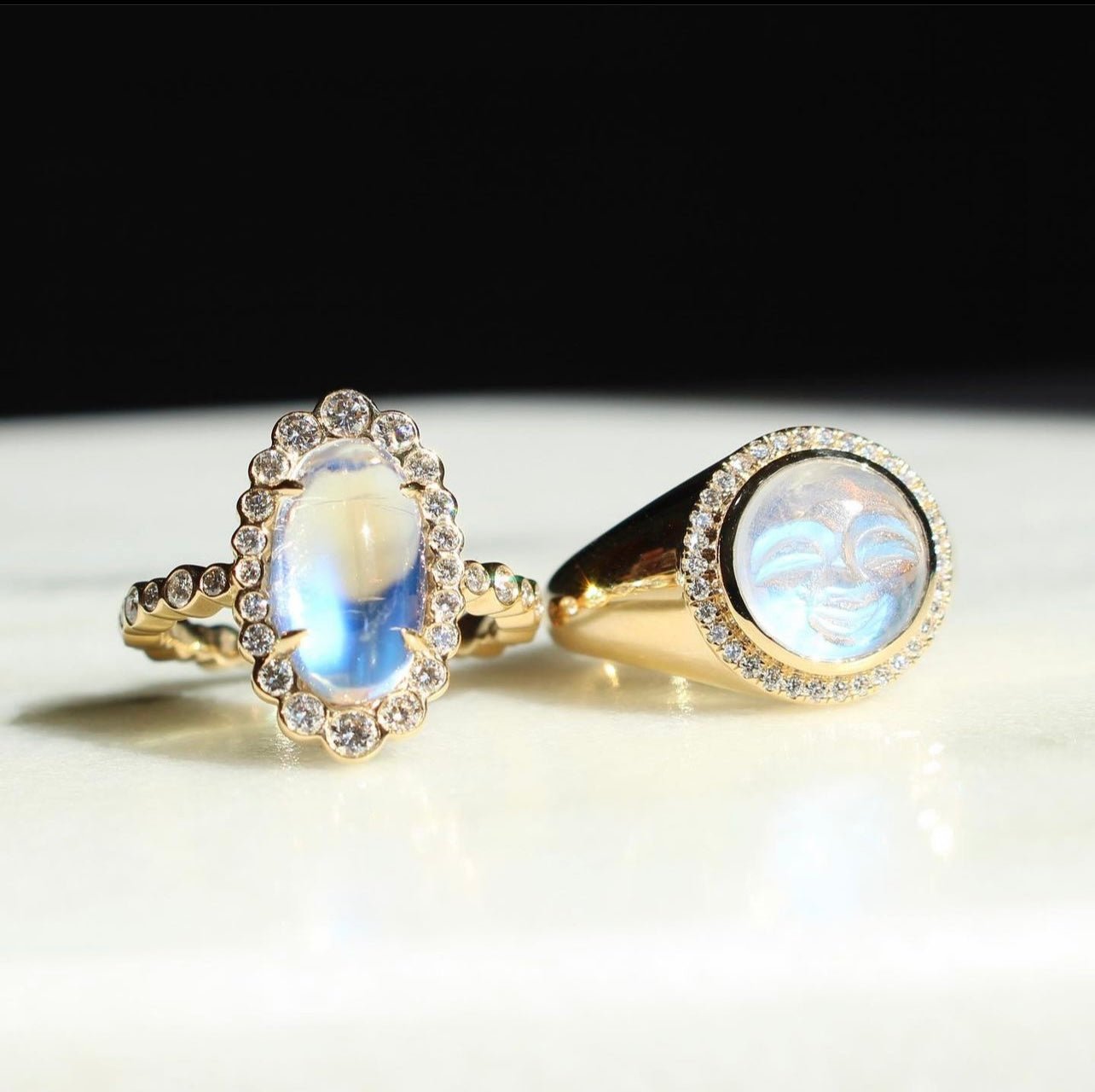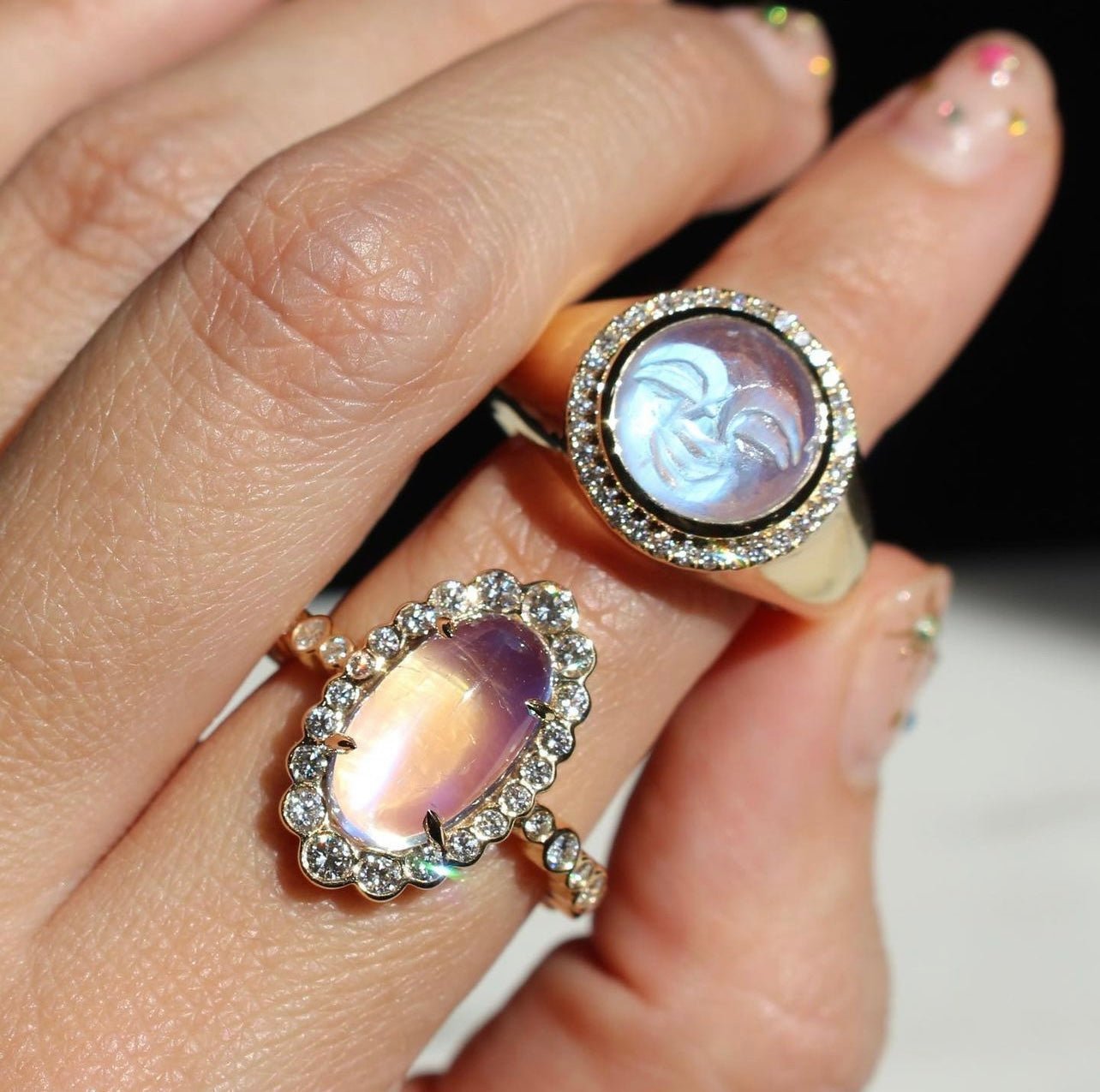Let us set the scene: You’re scouring the selections at a local jeweler or scrolling online, and you’re searching for inspiration. We’ve all been there. Sometimes it takes something out of the ordinary to really catch your eye and hold your attention.
When it comes to fine jewelry, you want to make sure that your purchase is worth the price. Commonplace gemstones or less valuable diamonds can make for fun gifts, but they won’t stand the test of time. That’s why we’re so excited to introduce you to your new best jewelry friend — Paraiba tourmaline.
This gemstone has it all. It's riveting in color, with a unique blue hue. It captivates the heart of any wearer with its intricate history and lore. It is also highly wearable and won’t scratch or dent easily when placed in rings or bracelets.
Before you rush to find the perfect piece of Paraiba, we have to note that it belongs to a wider tourmaline family. It's likely that you’ve heard of this gem and know it for its variety of colors and qualities. What sets Paraiba apart from its relatives? Well, just about everything, but you have to know where to look!
This is where we come in. At Mark Henry Jewelry, we aim to give you the best and easiest shopping experience possible. Come along for the ride as we explore Paraiba tourmaline’s origins and its dazzling future in your wardrobe.
A Wide Net: The History of Tourmaline
When shopping for Paraiba tourmaline, you might run into some confused jewelers. Those who haven’t heard of the region-specific stone could present you with traditional and less rare tourmaline options. It’s vital that gemstone fans can tell the difference. In order to do that, let’s dive into the background of the whole family.
Tourmalines are found throughout the world in schists of crystalline and granite. They are known for their gorgeous hues, which are accredited to vanadium, manganese, iron, and chrome.
Copper is what creates Paraiba's blue-green coloring. The more green that is visually present (to the naked eye), the lower the price point. What matters the most to tourmaline value is how deeply saturated its color is. The bluest of the blue will win over a weak-toned gemstone any day.
Typically tourmalines rank as a 7-7.5 on the Mohs scale of hardness. Inclusions are common and don’t do much to disrupt worth. They don’t have cleavage, but they do have hexagonal crystallography. Treatments on tourmalines can include heating and fillings in fractures (which are conchoidal) if they are found.
Do Tourmalines Come in Other Colors?
It isn’t uncommon to find tourmalines that are pink or red. You can even stumble upon a violet-colored tourmaline if you’re lucky enough. Of course, these gemstones are deemed less expensive because blues are the most desirable. Mozambique is home to warmer-toned stones.
It is possible to use heat treatments on these stones to transition them into cooler tones. Since the ideal is blue, this takes time and effort. However, not everybody wanted to get rid of red tourmalines. In fact, they were thought to be rubies centuries ago.
The Caesar’s Ruby, a gemstone in a pendant owned by Russian royalty, was not what met the eye. It was a rubellite tourmaline! This attests to the high-quality appearance of these stones and why careful and precise identification matters. Nowadays, we have the tools to equip gemologists to be able to tell tourmalines apart from each other and from other gems.
Where Does Tourmaline Come From?
Despite our focus on Brazilian tourmalines, they can be mined internationally.
Mozambique is only one of the locations in Africa where these gems can be found. Kenya and Madagascar also have tourmaline supplies. Afghanistan and Pakistan produce tourmaline, as well as the sources in California and Maine found in the 1800s.
What Is Paraiba?
Paraiba is a type of tourmaline defined by a few specific characteristics. The most popular is the inclusion of copper, which results in the “neon” effect of bright blue colors. A blend of this copper and manganese can create differences in Paraiba tourmaline colors. Some are far more blue-green, while others can be blue-violet.
Saturation for tourmalines is ranked from 4 to 6, and Paraiba varieties typically surpass their competitors on this scale. They are also known to have a desirably light tone, which adds to how striking they appear.
Paraiba tourmalines were first discovered in Paraiba, Brazil. Expansive findings of copper elbaite worldwide forced the International Gemstone Industry Laboratory Conference to reconsider this name as a type of tourmaline. If you’re in search of a stone from Brazil, shop by region of origin and not by title.
Why Brazilian Paraiba Tourmaline Is Best
Paraiba tourmaline that hails from mines in Brazil is the rarest and most exquisite.
Heitor Dimas Barbosa led the mining expedition that surfaced these tourmalines in Paraiba in 1989. He was a pioneer for gemology and truly transformed the future of this October birthstone with his discovery.
It is best for true Paraiba tourmalines to be cut, revealing their beautiful colors to viewers.
International Finds
Mozambique and Nigeria are also home to Paraiba tourmalines. Gemologists have compared them to their Brazilian counterparts and found that while similar, they don’t quite meet the mark.
The Nigerian Paraiba was discovered in 2001. It does possess the gorgeous blue-greens of the Brazilian variety, but it is not as vibrant. Saturation lacks in comparison to stones from Paraiba.
To understand why one stone can seemingly travel, look back about 280 to 230 million years ago when all the continents (like Western Africa and South America) were connected — Pangea.
Setting Them Apart
If you see a smaller piece of Paraiba tourmaline, it is more likely to be from Brazil than a big stone. Original Brazilian Paraiba was commonly five grams or less, uncracked. The land that it was taken from produced pieces of tourmaline crystals rather than large rocks, making for size differences from the traditional gems.
It is also worth looking into the price tag attached to a Paraiba piece. The original Paraiba mines closed shop once they were fully worked and are no longer producing new stones. This makes true Brazilian Paraiba even more rare and valuable. If you get your hands on a piece of tourmaline from Paraiba, the cost should reflect that.
If you’re lucky enough to find a Paraiba that is between three and five carats (large in comparison to most), you’ll be paying more. Don’t be afraid that a larger size equates to a non-Brazilian variety. It may just mean that you’ve come across a rare, albeit more expensive, find.
Natural Tourmaline vs. Lab-Created
Another time when Paraiba identification comes in handy is if you’re shopping amongst lab-created gems. You might think that it's easy to tell the real thing apart from its doppelgangers, but it can be tricky.
Tourmaline, and all stones made in labs, are grown in an environment as identical as possible to nature. This can mean they have identical properties, and you might need the help of a gemologist to dig deeper.
One way to tell the two apart is to look for inclusions. While some people prefer inclusion-free gems, this doesn’t necessarily mean they are any more valuable. Inclusions can be a hallmark of how authentic and natural a tourmaline is because they only occur when they’re made in true crystals.
Our Paraiba Values
At Mark Henry Jewelry, we understand the reverence that people hold toward Paraiba tourmalines. We also understand how valuable authentic Brazilian Paraiba is. That is why we source our gemstones directly from Brazil in the most transparent way possible.
As a company, we are committed to bringing only the best quality gemstones to our shoppers. This is reflected in how we source our gems and the openness in the process from mine to your jewelry box.
Beautiful Paraiba Rings
The proof is in the colors. For example, our Brazilian Paraiba Diamond Frame Ring couldn’t possibly be from anywhere else. With 0.37ct of purely electric blue-green Paraiba, this ring glows from across the room. Set in an 18kt gold band with 0.17ct diamonds, it's a testament to the rich history of these tourmalines.
Another favorite is our Guardian Brazilian Paraiba Ring. 1.52ct of Paraiba forms the shape of an evil eye alongside 0.50ct of blue sapphire and 0.79ct of diamonds. The combination offers protection and beauty, perfecting a blend of cool-toned gemstones.
The Mark Henry Promise
To ensure that your ring is as advertised, all of our jewelry comes with an authentication by reputable third-party gemologists. We use the Gemological Institute of America’s graduate gemologists for this job, some of the top certifiers.
Sources:
Paraiba Tourmaline | International Colored Gemstone Association
Paraíba Tourmaline Value, Price, and Jewelry Information | International Gem Society

